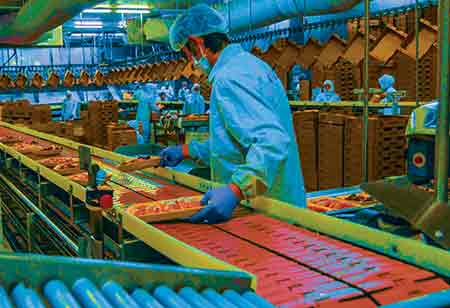Thank you for Subscribing to Food Business Review Weekly Brief
- Home
- Topics
- Alternative Proteins and Plant Based Food
- Beer and Wine
- Canned Beverages
- Coffee And Tea
- Food and Beverage Consulting
- Food and Beverage Financial Service
- Food And Beverages Marketing
- Food Distributors
- Food Ingredients
- Food Sustainability
- Plant Based Food and Beverages
- Seafood Suppliers
- Supplement Manufacturing
- Wine Investment
- News
- Vendor Viewpoint
- CXO Insights
- Conferences
- Newsletter
- CXO Awards
-
Changes in the Food Delivery Industry Trends
Due to immense competition, different online food delivery platforms have successfully captured a considerable market share and new marketing and innovation techniques.

By
Food Business Review | Monday, April 25, 2022
Stay ahead of the industry with exclusive feature stories on the top companies, expert insights and the latest news delivered straight to your inbox. Subscribe today.

Restaurants and food delivery services have begun embracing new trends to draw millennials and increase their profit margins. Generation Y spends most of its budget on food, but they also expect top-notch customer service.
Due to immense competition, different online food delivery platforms have successfully captured a considerable market share and new marketing and innovation techniques. The food delivery owners have started focusing on the most recent trends and technological advancements to survive the market race and meet customer demands.
Here are some food delivery service trends that restaurant owners must focus on to increase demand.
1. Millennials as Key Drivers
Compared to other generations, millennials are the priority audience for the food delivery services as they spend a maximum share of their budgets on food. With these advanced and fast-paced lives, the demand for food delivery and quick-service restaurants has increased due to Generation Y as they use these services more.
As millennials have more major spending power, their requirements are higher than others. For instance, people of today’s generation want effortless ordering, instant delivery, one-step checkout, gamification, and many more.
To fulfill the demands of the millennials, food delivery companies have invested in new ordering channels and delivery options.
2. New Delivery Channels
Most people neglect digital takeout orders if they experience poor customer service and want a more accessible online ordering system. Now, suppose the food delivery platforms want to keep their customers. In that case, they must simplify ordering and allow the customers to place orders through all possible channels such as social media, virtual assistants, smart devices, cars, and many more.
3. Modern Delivery Options
Food delivery companies do not have to restrict their services to the labor force. Instead, accelerating the delivery services has become easy for them and lower operational costs with the help of robots, drones tech, and even parachutes.
4. Embracing New Trends
Many food delivery services have begun focusing on a particular niche. For example, the food delivery sectors have already seen platforms that appeal to vegans and companies that stick to items like burger boxes, farm-grown food, or healthy smoothies.
Nevertheless, it is easier for the food delivery startups to create a market for themselves as they can break through the entry barriers and fight off the intense competition because they know the recent food trends in the market. A restaurant owner must often watch new trends gaining traction, including the fight against food waste, pet food, and virtual kitchen.






